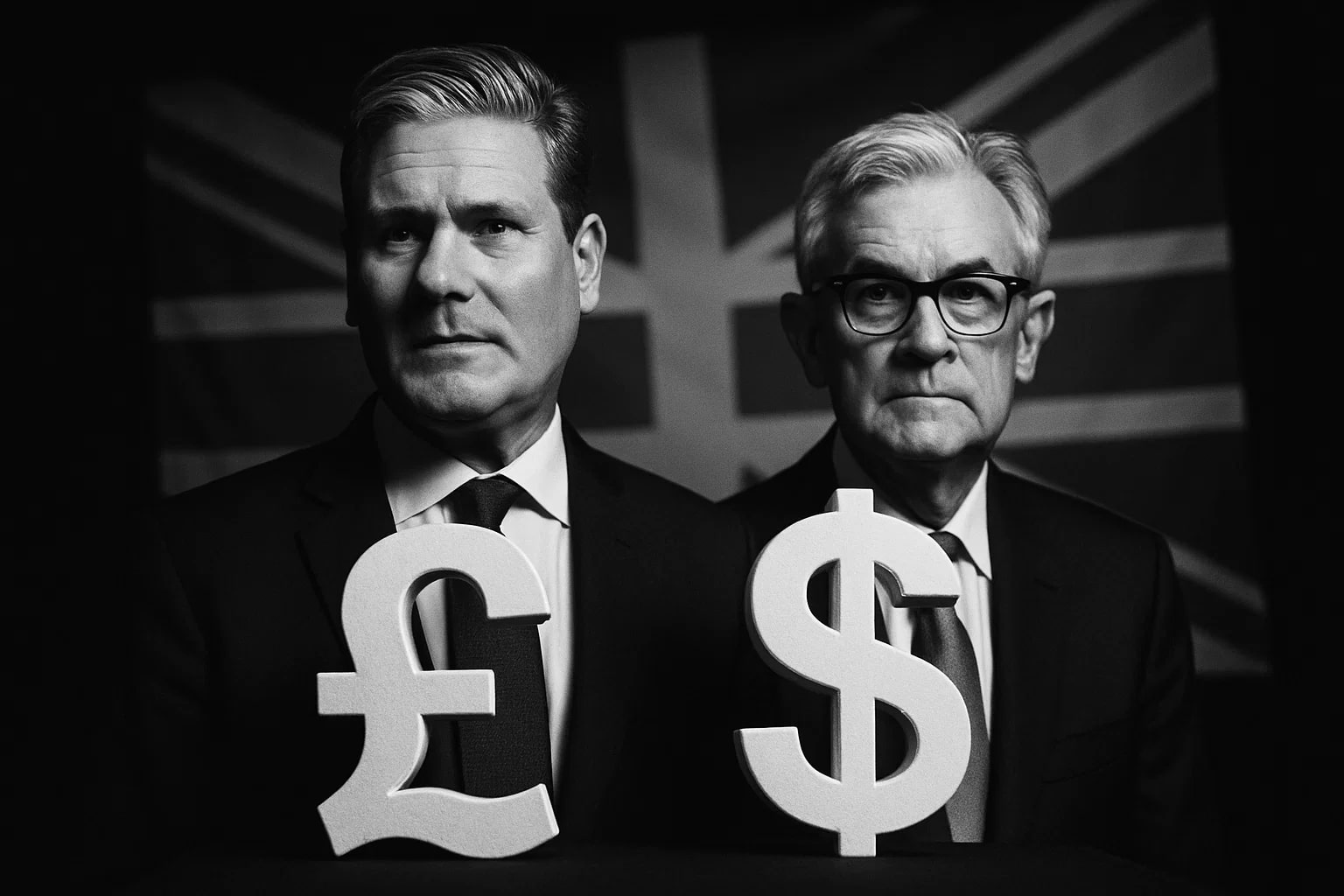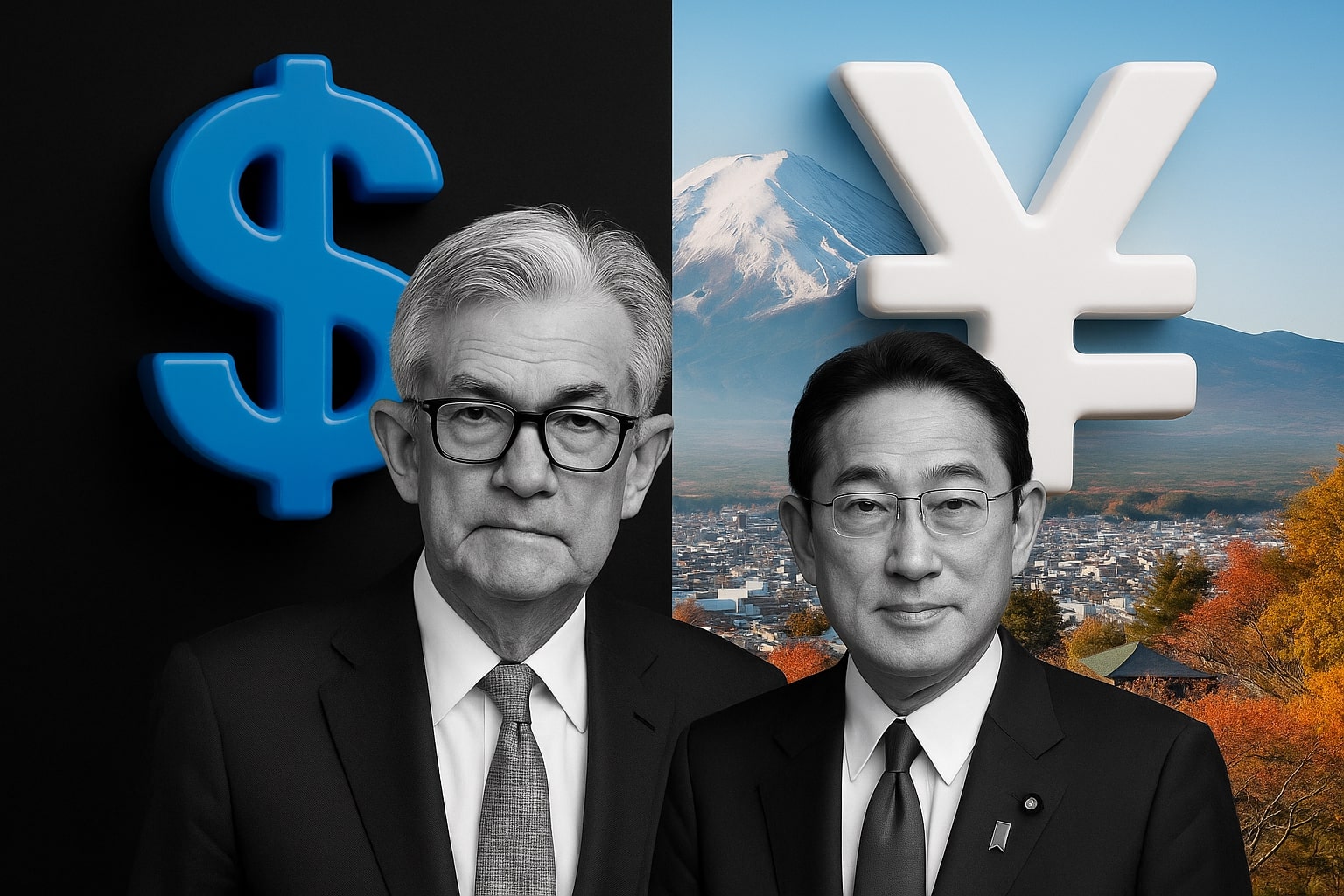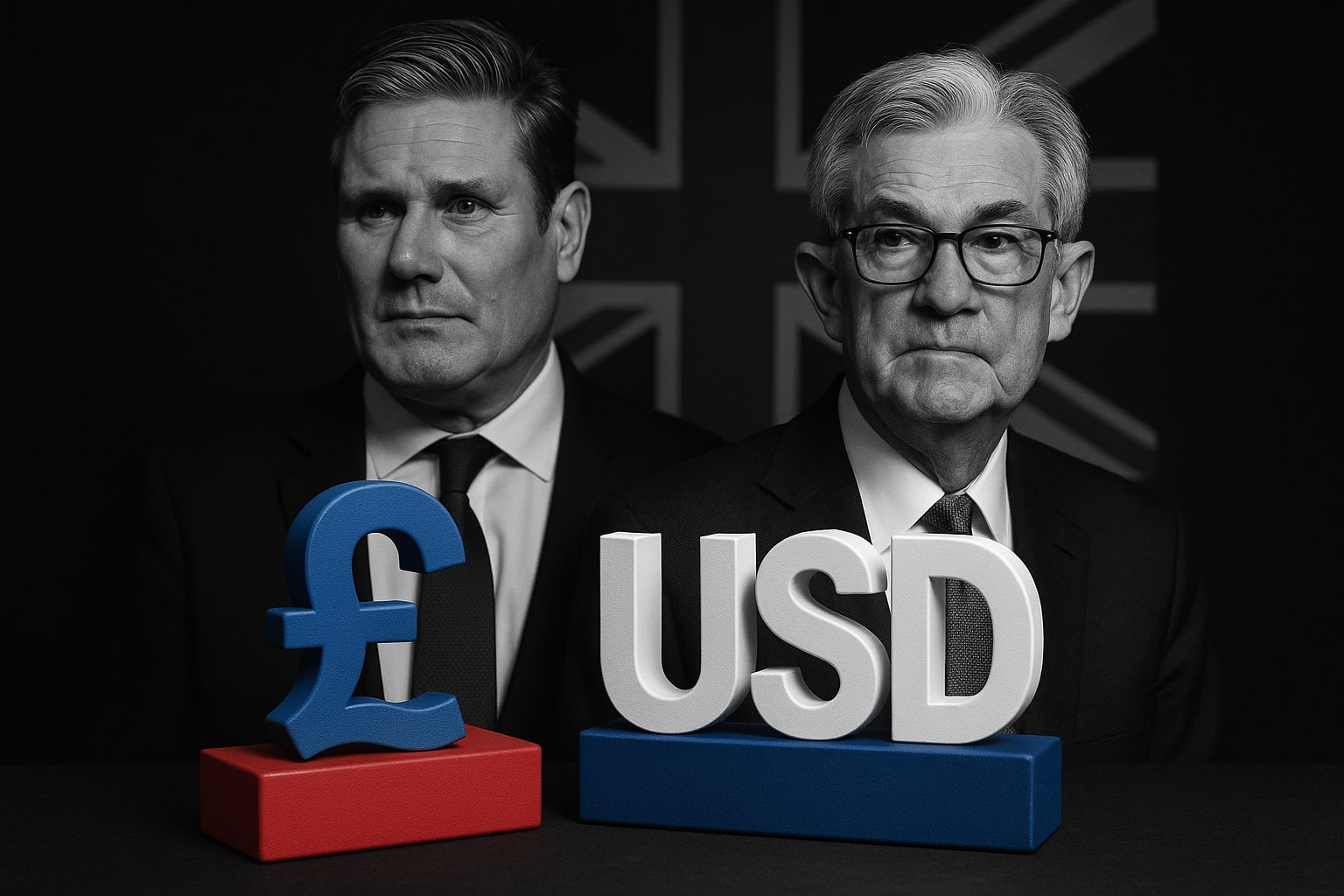
EUR/USD Price Forecast - Euro Steadies at 1.1560 as Dollar Weakens on Prolonged U.S. Shutdown and Fed Cut Bets
The euro climbs 0.16% with DXY at 99.53; U.S. yields drop to 4.09%, shutdown hits day 38, and traders price a 66% chance of a December Fed rate cut | That's TradingNEWS
EUR/USD GRINDS HIGHER AS DOLLAR LOSSES ACCELERATE UNDER POLITICAL GRIDLOCK
The EUR/USD pair has shown measured strength through the end of the week, holding near 1.1560, up 0.16%, as investors retreat from the U.S. dollar amid deepening political dysfunction in Washington and fading macro visibility. The U.S. government shutdown, now stretching into its 38th day, has paralyzed the release of key economic data — including nonfarm payrolls — amplifying uncertainty and forcing traders to price in earlier policy easing from the Federal Reserve. The U.S. Dollar Index (DXY) slipped to 99.53, erasing weekly gains after touching a four-month high above 100.21 earlier, a level that proved unsustainable as yields softened and Wall Street extended its steepest decline in seven months. The euro, which had been battered in early autumn by weak manufacturing readings, has regained some footing as investors look for alternative liquidity havens outside of the dollar.
The market narrative has reversed sharply from last month’s “King Dollar” dominance. Traders who had positioned for a stronger greenback in response to high U.S. real yields are now unwinding those bets amid fears of prolonged fiscal dysfunction. The absence of new Treasury supply auctions during the shutdown, along with weaker consumer sentiment, has reduced demand for the dollar as a safe asset. EUR/USD is trading between 1.1500 and 1.1600, consolidating below the 38.2% Fibonacci retracement of the May–September downtrend at 1.1593. The pair’s intraday range has tightened considerably, signaling compression ahead of a larger directional move.
U.S. MACRO BACKDROP: WEAKER SENTIMENT AND RATE-CUT PRICING REINFORCE EURO’S SHORT-TERM EDGE
Macro indicators from the U.S. continue to show cracks forming beneath the surface. The University of Michigan Consumer Sentiment Index for November dropped to 50.3, its lowest level since mid-2023 and sharply below consensus expectations of 53.2. Inflation expectations one year ahead ticked slightly higher to 4.7% from 4.6%, while five-year projections eased to 3.6% from 3.9%. In parallel, the New York Fed Consumer Expectations Survey reported one-year inflation forecasts easing to 3.2%, with both three- and five-year expectations steady at 3.0%. These figures reveal a nuanced shift — the short end remains sticky, but medium-term inflation is stabilizing, bolstering arguments for the Fed to begin cutting rates sooner.
Markets now assign a 66% probability of a December rate cut, up from 48% two weeks ago. U.S. Treasury yields have responded in kind: the 10-year yield fell to 4.09%, down nearly 17 basis points from the monthly peak. Vice Chair Philip Jefferson commented that the Fed should move “cautiously” given the data blackout caused by the shutdown, implying a pause before the next policy recalibration. That cautious stance weighed further on the dollar and revived short-term support for the euro, particularly as carry-trade flows into the dollar lost momentum.
EUROZONE FUNDAMENTALS: TRADE SURPLUS SHRINKS, BUT SERVICES RESILIENCE LIMITS DOWNSIDE
In Europe, the fundamental picture remains mixed. Germany’s September trade surplus narrowed to €15.3 billion, missing expectations of €16.8 billion, largely due to weaker exports to the U.S. and Asia. Nonetheless, the contraction in export volumes was partially offset by resilient service-sector growth and steady industrial orders from within the euro area. Retail sales for September declined 0.3% month-on-month, marking the second consecutive drop, though analysts note that the slide is less severe than the 0.6% fall registered in August.
The European Central Bank (ECB) faces a delicate balance: inflation across the bloc stands at 2.8%, down from 3.4% in August, yet core inflation remains stubborn at 3.1%. Several ECB policymakers, including Philip Lane and Isabel Schnabel, have reiterated that rate cuts remain off the table until wage growth cools further. Nevertheless, the widening interest-rate gap between the U.S. and the eurozone has stopped expanding for the first time this year — a structural shift that supports EUR/USD above 1.15.
TECHNICAL LANDSCAPE: 1.1500 HOLDS AS BASE WHILE BULLS TARGET 1.1686–1.1748 ZONE
Technically, EUR/USD has carved out a medium-term base at the 1.1500 handle — a level that carries heavy historical significance, having acted as both support and resistance during multiple inflection points since 2019. The pair rebounded from its August 1 cycle low of 1.1391, and momentum indicators now show neutral-to-bullish signals. The Relative Strength Index (RSI) recovered from 42 to 52, while MACD lines are converging toward a bullish crossover on the daily chart.
Immediate resistance sits at 1.1593, the 38.2% Fibonacci retracement of the May–September decline, followed by 1.1686 and 1.1748, which represent the 76.4% and 78.6% retracement levels of the 2021–2022 major move. A decisive close above 1.1686 would likely trigger algorithmic buying, targeting the 200-day simple moving average (SMA) at 1.1748. Support zones remain at 1.1500, then 1.1462, and deeper at 1.1344, the 200-day SMA — a line that delineates the transition between a pullback and a full reversal.
On a weekly scale, the pair’s structure shows an emerging double-bottom formation with a neckline between 1.1631–1.1646, hinting at a potential recovery phase toward 1.1750–1.1800 if confirmed. Conversely, failure to hold 1.1500 could re-expose the summer lows near 1.1390, undermining the bullish scenario.
MARKET PSYCHOLOGY: EURO ATTRACTS HAVEN FLOWS DESPITE FRAGILE OUTLOOK
Paradoxically, the euro has benefited from global risk aversion. The AI-led selloff in U.S. equities — with the Nasdaq falling 3% this week and mega-caps like Tesla (–3.7%) and Nvidia (–9.5%) plunging — has eroded confidence in growth assets. Typically, such a sentiment shock would strengthen the dollar; instead, traders diversified into the euro and the Swiss franc, citing concerns about the U.S. fiscal impasse and potential credit-rating downgrades. The EUR/USD correlation with U.S. equity volatility has flipped negative over the last 10 sessions, showing that euro demand is increasingly defensive rather than cyclical.
According to the CME futures positioning, speculative net shorts on the euro fell by 21,000 contracts last week, marking the fastest short-covering since April. The shift suggests renewed confidence that the euro can hold above parity in the medium term even as U.S. monetary policy transitions from tightening to accommodation.
Read More
-
Micron Stock Price Forecast - MU Shares Surges Toward $300 Target as AI Memory Demand Powers $54B FY2026 Forecast
08.11.2025 · TradingNEWS ArchiveStocks
-
XRP Price Forecast - XRP-USD Holds $2.27 as 21Shares XRP ETF Decision Nears — $4 Target in Sight Amid $40B Valuation
08.11.2025 · TradingNEWS ArchiveCrypto
-
Oil Price Forecast - Oil Prices Recover: Brent at $63.63, WTI at $59.75 as U.S.–Hungary Energy Talks Shift Market Outlook
08.11.2025 · TradingNEWS ArchiveCommodities
-
Stock Market Today - Nasdaq Plunges 3% as AI Selloff Hits Nvidia and Tesla; Gold Holds $4,009, Oil Rebounds
08.11.2025 · TradingNEWS ArchiveMarkets
-
GBP/USD Price Forecast - Pound Climbs to 1.3124 as Oversold Pound Rebounds and Dollar Slides After 38-Day Shutdown
08.11.2025 · TradingNEWS ArchiveForex
INTRADAY DYNAMICS: VOLATILITY CLUSTERS BETWEEN 1.1520 AND 1.1600
Intraday data reveal a compression of volatility that often precedes breakout conditions. The average true range (ATR) has narrowed to 48 pips, down from 73 pips two weeks ago, signaling lower realized volatility but potential for a sharp move once the range breaks. Market depth remains thin due to the absence of U.S. data releases, and the pair is oscillating around its 20-day SMA at 1.1592. Traders are watching this level closely: a sustained hold above it could attract momentum funds targeting 1.17, while failure to clear it could reinforce a return toward 1.1450.
In the interbank market, the euro was the strongest G10 performer against the New Zealand dollar (+1.99%) and the Australian dollar (+1.04%), highlighting how risk-off sentiment in Asia is boosting the single currency’s cross strength. Against the Swiss franc, however, the euro only managed a modest +0.34% gain, showing that continental safe-haven demand is splitting between EUR and CHF rather than concentrating in one.
BROADER MACRO CONTEXT: ECB AND FED TRAJECTORIES BEGIN TO CONVERGE
The policy divergence that fueled dollar supremacy in early 2025 is fading fast. The Federal Reserve’s September rate cut marked the first turn in the cycle, and since then, the central bank has emphasized flexibility amid deteriorating data quality. Meanwhile, the ECB has shifted toward a more data-dependent stance but refrained from committing to cuts. Markets expect the Fed funds rate to fall from 5.25% to 4.75% by March 2026, while ECB deposit rates are projected to remain steady at 4.00% until at least the second quarter. That narrowing differential of 75 basis points (down from 125 bps earlier in the year) underpins the euro’s structural resilience.
At the same time, the eurozone’s fiscal dynamics remain less toxic than those in the U.S. The bloc’s aggregate public-debt-to-GDP ratio of 88% contrasts with the U.S. figure above 126%, giving the euro a relative advantage in terms of sovereign risk perception. This fiscal contrast, coupled with Europe’s improving current-account balance, has made EUR/USD increasingly sensitive to shifts in U.S. political stability rather than its own domestic weakness.
TECHNICAL SENTIMENT AND FLOW DATA: BUYERS REBUILD POSITIONS ABOVE 1.1550
Flow analysis from major European banks shows a distinct accumulation trend. Corporate hedging flows, which had been dollar-centric for much of Q3, have started rotating toward euros as multinationals anticipate a weaker dollar environment heading into year-end. Spot market data show bid concentrations between 1.1530 and 1.1560, coinciding with visible option barriers expiring near 1.1600 for mid-November. Options market implied volatility for one-month tenor has slipped to 6.1%, its lowest since July, but risk-reversal spreads favor euro calls by +0.35 vols, indicating a modest bullish bias among institutional traders.
GEOPOLITICAL AND COMMODITY LINKAGES: ENERGY IMPORT COSTS STABILIZE
Falling oil prices are lending the euro additional breathing space. Brent crude has retreated to $59.75 per barrel, down nearly 15% from October highs, easing the eurozone’s import burden and lowering inflation pass-through risk. Natural-gas futures have settled near €33 per MWh, down from €42, a relief for Germany’s energy-intensive manufacturing base. The improving terms of trade help explain why the euro has outperformed commodity-linked currencies like the AUD and NZD, which are suffering from China’s sluggish demand.
SHORT-TERM SCENARIOS AND STRATEGIC LEVELS TO WATCH
The next decisive move hinges on whether the EUR/USD pair can break beyond 1.1593–1.1600. A daily close above that zone would expose 1.1686 as the next objective, then 1.1748, where sellers are expected to re-enter. If the pair fails to breach resistance and dips below 1.1500, the bias would shift back toward the 1.1390–1.1344 area, where the 200-day SMA converges with prior August swing lows. In that event, traders will look to the 98.98–98.60 range in DXY as a key test of dollar support; a break there could reinforce euro upside.
Momentum traders should note that the 20-day SMA crossover with the 50-day SMA is approaching from below — a bullish signal that, if confirmed, could invite trend-following inflows. Meanwhile, speculative leverage ratios in retail platforms show net-long exposure to EUR/USD around 63%, a level that historically aligns with the early stages of medium-term rallies rather than tops.
MARKET OUTLOOK: VOLATILE EQUILIBRIUM BEFORE POLICY DECISIONS
The macro equilibrium remains fragile. The dollar’s weakness stems less from outright pessimism about the U.S. economy and more from the structural inability of policymakers to provide fiscal clarity. The euro’s gains are not purely organic either — they are a byproduct of global capital reallocation in an environment where investors are forced to seek liquidity outside the United States. For the next two weeks, price action will hinge on whether the shutdown resolution restores confidence in U.S. data or extends uncertainty into the December FOMC meeting.
VERDICT: EUR/USD SHORT-TERM BULLISH, MEDIUM-TERM NEUTRAL (BUY RANGE 1.1500–1.1600)
Based on all technical, macroeconomic, and sentiment factors, EUR/USD shows room for further appreciation in the short term. The pair’s firm defense of 1.1500, strengthening euro demand amid risk aversion, and declining U.S. yields favor continuation toward 1.1686–1.1750 in the coming sessions. However, persistent fiscal stress and uneven European growth cap medium-term upside. The overall stance is short-term bullish, medium-term neutral, with an actionable Buy zone between 1.1500 and 1.1600, and upside targets at 1.1750–1.1800, while downside protection sits at 1.1450.
The euro’s resilience above 1.15 signals a market that no longer fears parity — instead, it’s testing whether the next leg higher can emerge before the Fed reclaims control of the narrative.


















